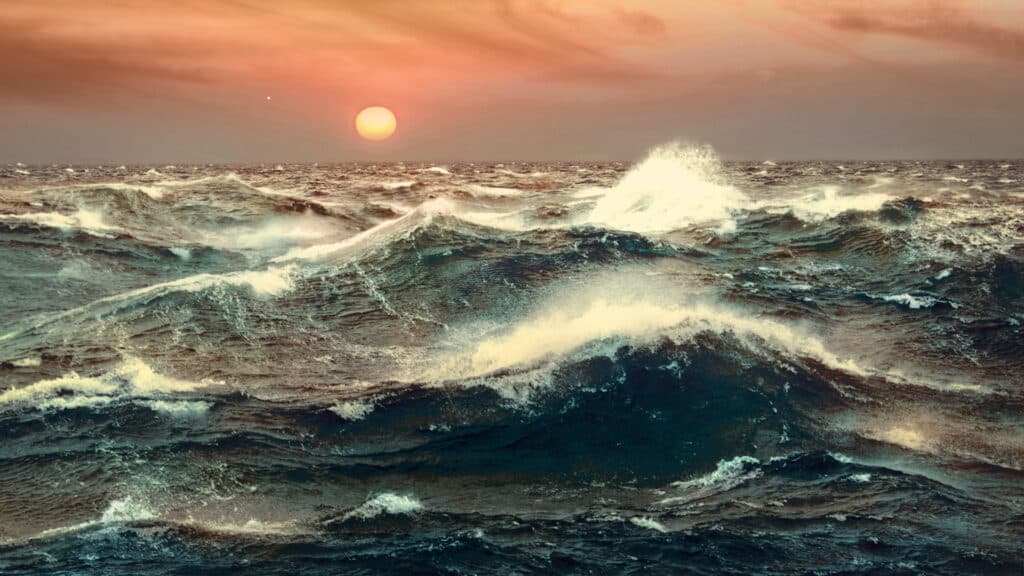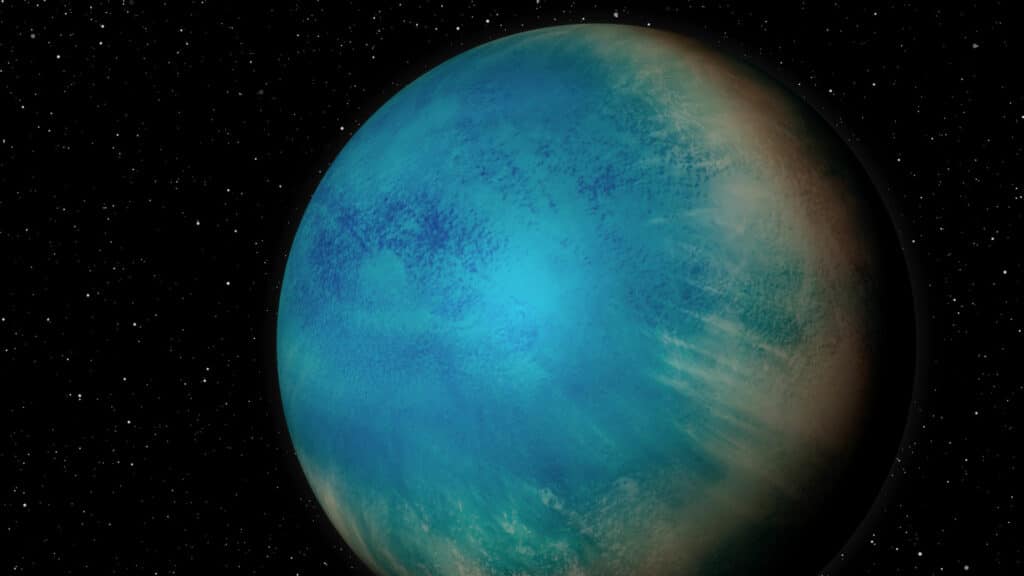It looks like a world unlike any other: TOI-1452 b, a “Goldilocks” exoplanet located about 100 light-years away. The exoplanet was found in a binary system and is located in the so-called “habitable zone” of its host star — a key ingredient for liquid water.
An international team of researchers led by Charles Cadieux, a Ph.D. student at the University of Montréal and member of the Institute for Research on Exoplanets (iREx), believe that TOI-1452 b is an ocean planet.
This new discovery, by Cadieux and his team, is the first one of its kind. The paper, published in The Astronomical Journal, reports on observations of this new ocean planet.
“I’m extremely proud of this discovery because it shows the high caliber of our researchers and instrumentation,” said René Doyon, Université de Montréal Professor and Director of iREx and of the Observatoire du Mont-Mégantic (OMM).
The Mont Mégantic Observatory houses the second-largest telescope in Eastern Canada. Astronomers used a new instrument called the SPURou — a spectrograph that comes with a new analytic method that is powerful and precise enough to detect Earth-size planets in their habitable zones.
Finding TOI-1452 b took teamwork. NASA’s space telescope TESS was watching the binary system and found that brightness decreased every 11 days, a signature of transiting planets.
The PESTO camera’s high resolution sees what was once missed
Using a new camera called PESTO installed on OMM’s telescope, Charles Cadieux and a group of astronomers were able to follow up on what TESS saw.
“The OMM played a crucial role in confirming the nature of this signal and estimating the planet’s radius,” explained Cadieux. “This was no routine check. We had to make sure the signal detected by TESS was really caused by an exoplanet circling TOI-1452, the largest of the two stars in that binary system.”

TESS was only able too see the binary system as a single dot of light.
PESTO saw the two planets — one being TOI-1452 b. Astronomers predict that the exoplanet is about 70% larger than Earth, and covered in thick water.
SPIRou, the infrared spectropolarimeter, takes the planet search to a new level
SPIRou operates in the infrared spectrum, where these stars are the brightest, and it was ideal for studying TOI-1452 b. The researchers then observed the exoplanet with SPIRou for over 50 hours to estimate the planet’s mass.
“TOI-1452 b is one of the best candidates for an ocean planet that we have found to date,” said Cadieux. “Its radius and mass suggest a much lower density than what one would expect for a planet that is basically made up of metal and rock, like Earth.”
TOI-1452 b’s discovery gives scientists a new opportunity to test theories surrounding the origin of ocean planets.
Astronomers have discovered water all over the place. In recent years, astronomers have identified and determined the radius and mass of many exoplanets with a size between that of Earth and Neptune.
The discovery of an exoplanet, such as TOI-1452 b, is a promising candidate for further observation with the James Webb Space Telescope.
“Our observations with the Webb Telescope will be essential to better understanding TOI-1452 b,” said Doyon who overviewed the conception of James Webb’s component NIRISS. “As soon as we can, we will book time on Webb to observe this strange and wonderful world.”












